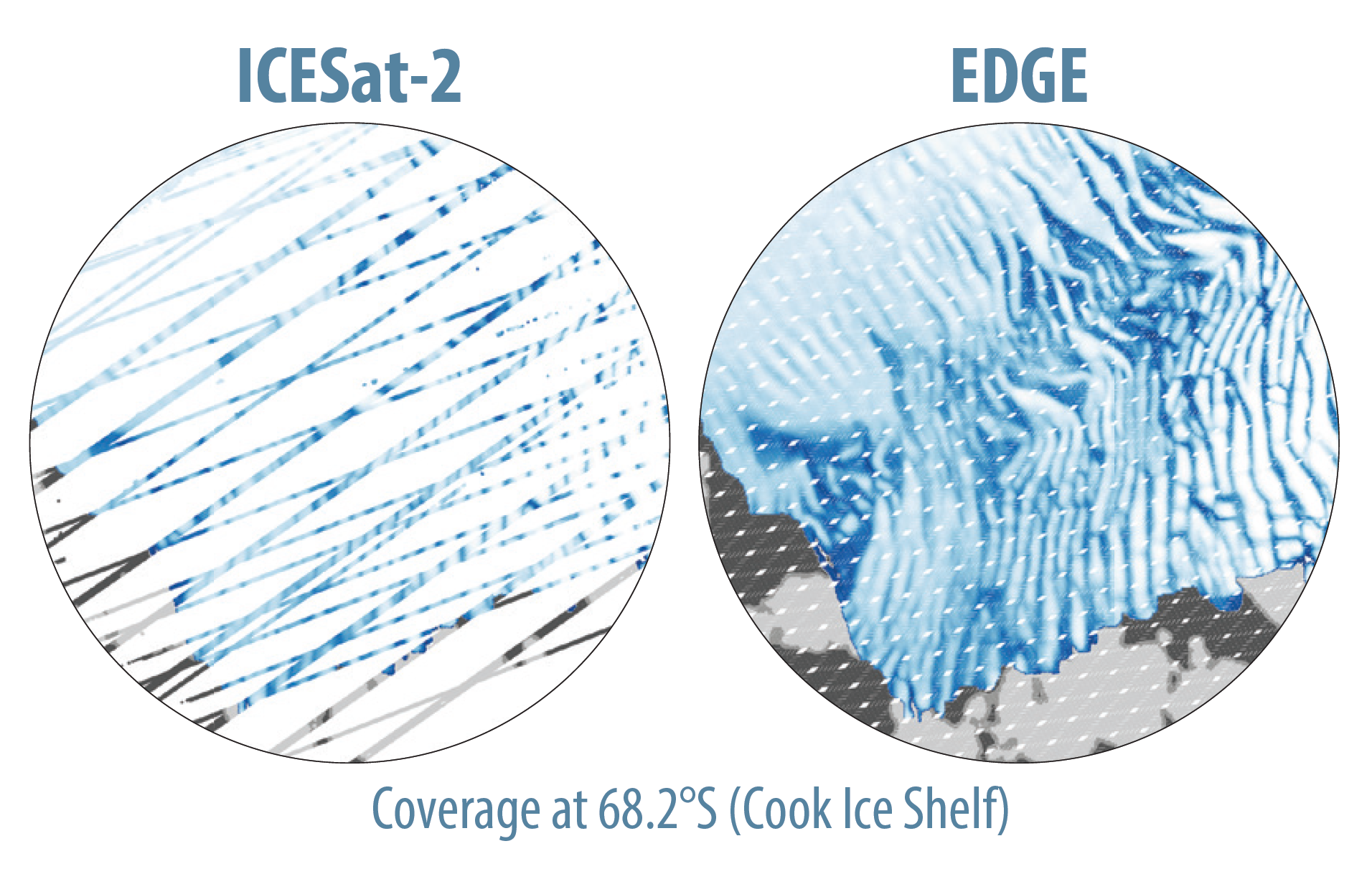Australian Antarctic scientists in bid for NASA space mission
15 May 2024
Two Antarctic scientists in Tasmania are part of an international team selected by NASA to develop a new satellite mission for monitoring the effects of climate and vegetation change.
Dr Petra Heil of the Australian Antarctic Division, and Dr Alex Fraser of the Australian Antarctic Program Partnership at the University of Tasmania, are collaborators in the Earth Dynamics Geodetic Explorer (EDGE) proposal led by the Scripps Institution of Oceanography at the University of California, San Diego. Principal investigator for the EDGE satellite mission, Scripps glaciologist Prof Helen Fricker, is an alumna of UTAS.
This mission would use high-resolution satellite laser altimeters to observe the three-dimensional structure of terrestrial ecosystems and the surface topography of glaciers, ice sheets and sea ice as they currently undergo rapid change in response to human activity.
Dr Fraser said that their proposal involves one satellite measuring two vital signs of Earth: vegetation cover and the frozen cryosphere (such as land glaciers and sea ice).
“Laser altimetry from space has become a key tool in our understanding of sea ice. Thanks to satellite laser altimetry, we have a much better understanding of the thickness of individual ice floes, as well as how far ocean waves can travel through ice in the marginal ice zone.”
“The next-generation satellite instrument we want to build will have 40 laser beams, compared to the six beams in the current altimeter on NASA’s ICESat-2.”

“Our EDGE satellite will be capable of measuring vertical differences with an accuracy of less than three centimetres from an orbit 390 kilometres above the Earth.”
“For our Antarctic research, this will provide unprecedented year-round information about the thickness and roughness of sea ice in extremely high resolution,” Dr Fraser said.
Dr Heil said she was excited to learn that the EDGE mission has passed the first hurdle.
“We have been working on this proposal with our mostly US-based partners for more than two years.”
“Despite recent progress in satellite altimetry, their sparse coverage and low repeat rates do not allow us to measure the short-term changes in the ice thickness, which are proxies for the dynamic changes to ice volume.”
“An instrument with the capability of EDGE would revolutionise our understanding of the physics of the sea ice and give us a better grasp on the processes causing changes in its volume.”
“The role of sea ice within the climate system is in the spotlight following the recent deficit in both Antarctic summer and winter sea-ice extent,” said Dr Heil.

NASA has selected four proposals for concept studies of space missions as part of the agency’s new Earth System Explorers Program.
“As the first step of a two-step selection process, each of these proposals will receive US$5 million to conduct a one-year mission concept study,” NASA said in a statement.
“After the study period, NASA will choose two proposals to go forward to launch with readiness dates expected in 2030 and 2032.”
“The total mission cost cap is US$310 million for each chosen investigation, excluding the rocket and access to space, which will be provided by NASA.”



